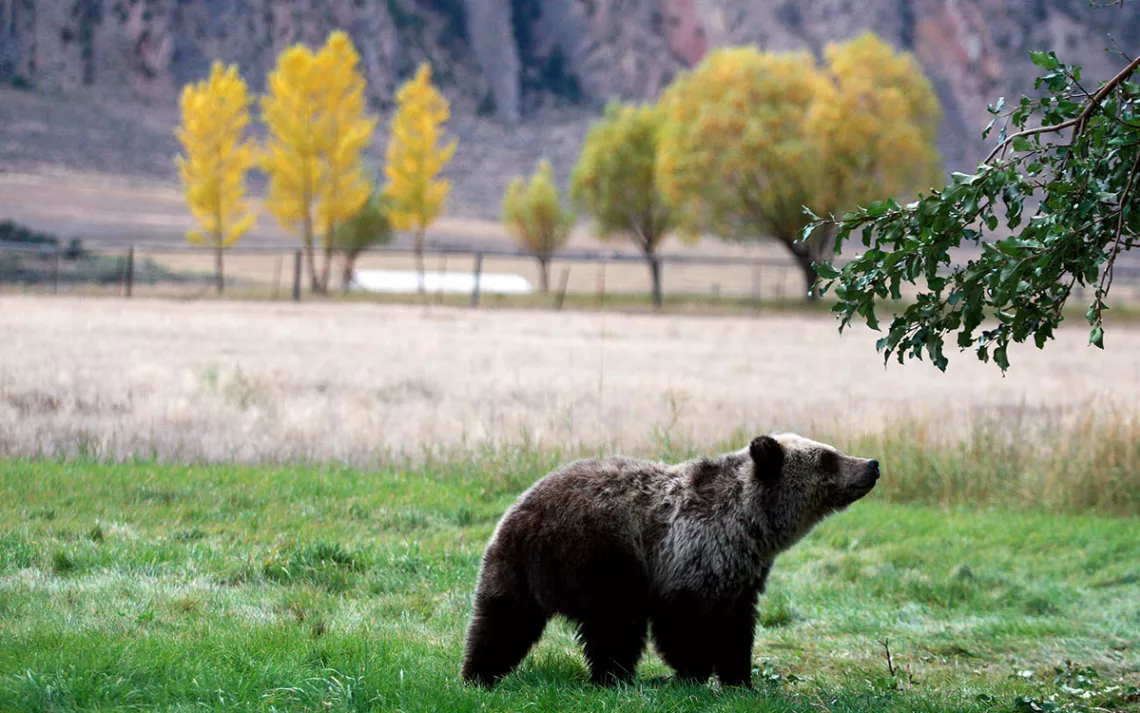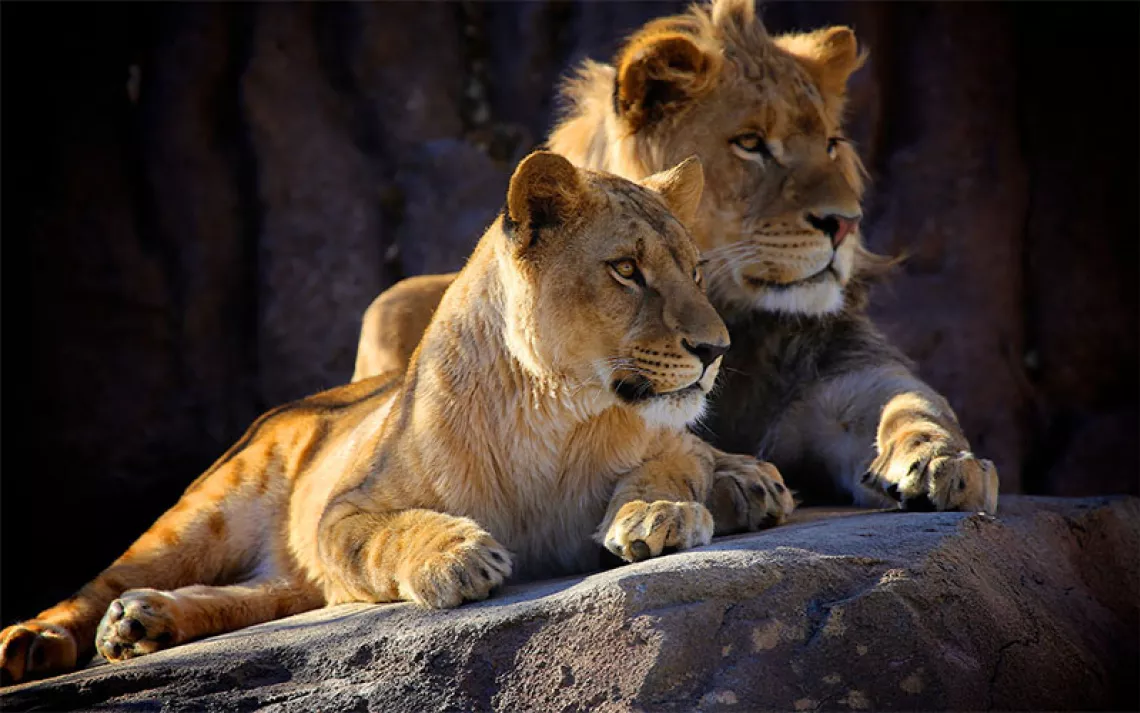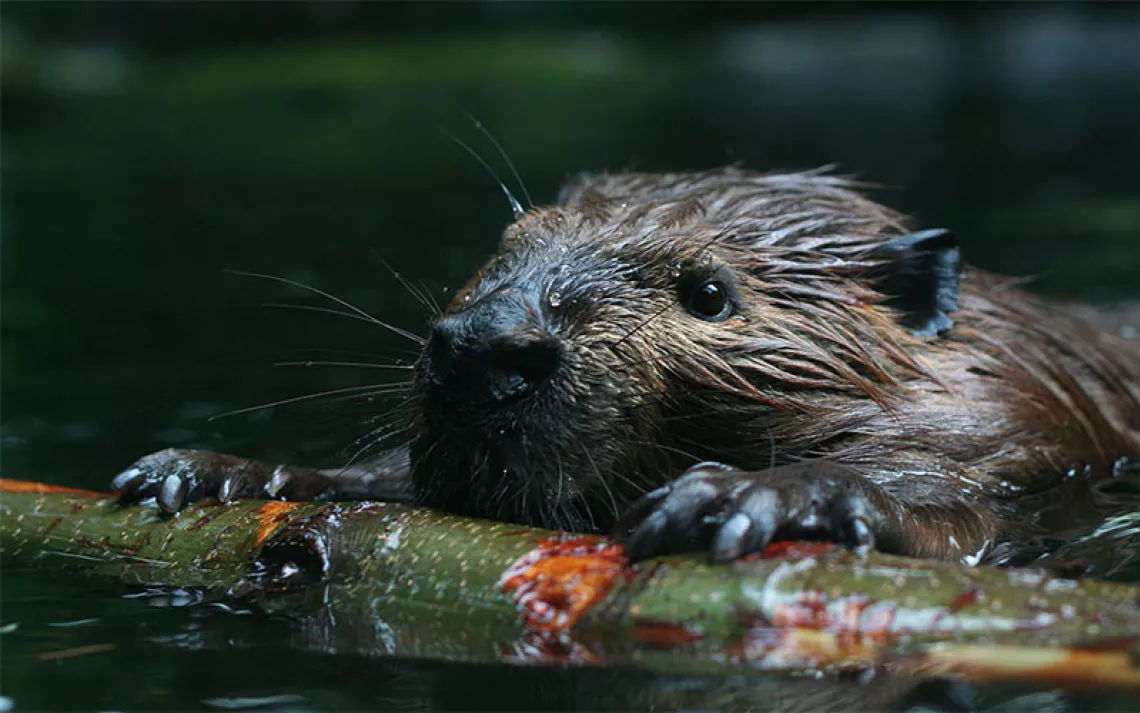The “Bear Aware” Movement Takes Hold in Montana
A small Montana town and popular tourist stop is on its way to becoming the state’s first “bear-smart community”

A grizzly bear cub a few miles from Yellowstone National Park. | Photo by Alan Rogers/The Casper Star-Tribune via AP
Editor's Note: On July 22, a woman was found dead on a trail about a mile from Yellowstone National Park after an encounter with a grizzly bear. Officials caution that while visitors to the park should be "bear aware," such attacks are extremely rare.
Just an hour and a half drive northeast of West Yellowstone sits the blink-and-you-miss-it town of Virginia City, Montana. Despite its small size, the town’s proximity to both Yellowstone National Park and Glacier National Park has made it a popular tourist stop between the two destinations. But up until six years ago, the small town used to have a big problem: hungry bears.
Conflict with black bears had been going on for “eons,” said Justin Gatewood, the mayor of Virginia City. Bears were commonly breaking into public and private trash cans as well as the town’s landfill, sometimes causing it to shut down for days. While Virginia City is home to only about 200 year-round residents, it also caters to about half a million tourists in the busy season, according to Gatewood. “The economic and human costs, we figured, were just way too high to continue to neglect the problem,” he said.
In 2017, with Mayor Gatewood at the helm, a town-wide effort was launched to make Virginia City almost completely bear-proof. But at the time, there was no other Montana town to look to for a blueprint on how to make this happen. So Gatewood joined forces with People and Carnivores, a nonprofit based in western Montana that’s dedicated to promoting human-wildlife coexistence.
Kim Johnston, the nonprofit’s field program manager and large carnivore conflict prevention specialist, began working closely with Gatewood. At first, the approach was to work with residents and businesses to tackle issues on an individual basis. But with the problem touching so many members in the community, it became clear that a more widespread approach was needed. That was when Johnston learned about a government program in British Columbia called the Bear Smart Community Program. It specializes in tailoring bear coexistence efforts to the needs of a specific community and works to provide the whole community with necessary tools and information to prevent conflict. Johnston and Gatewood decided to bring the idea to a town meeting to discuss how something similar could be done in Virginia City. They found that residents were overwhelmingly on board and in support of this community-wide approach, so they got to work.
One of the most pressing issues at the time was the town landfill, located in the neighboring town of Nevada City. Gatewood remembers a time when it was forced to shut down for a whole week due to bears that had learned to take advantage of the unnatural food source. The solution was to replace the traditional open pit landfill with a large, enclosed container. The container has a solar-powered hydraulic lid that can be opened and closed with the press of a button. Not only has this system entirely eliminated bears’ access, but it has also decreased the amount of litter that gets blown away in the wind. Gatewood said this was a surprising and positive unintended byproduct of changing their landfill’s infrastructure.
With the landfill bear-proofed, Gatewood and Johnston went about acquiring bear-proof trash cans for the town’s public spaces. They also worked to provide trash cans to local residents who wanted them for their private household. Almost every household in Virginia City now has a bear-proof trash can, according to Gatewood. There is also a town bank account dedicated to any future bear-smart efforts and a Bear Smart Committee that meets to discuss what is needed to keep the bear-smart efforts sustained. “We want to be a model community that can show with not too much effort and really limited resources, we can become a bear-smart community,” Gatewood said.
The efforts in Virginia City helped launch a region-wide Bear Smart Community program organized and run by the Interagency Grizzly Bear Committee. The IGBC is a leader in bear conservation and research in the Rocky Mountains, and Johnston said this new program could be a powerful tool for bear conflict resolution and coexistence. Already, the program is beginning to spread to other communities in Montana. “I think it’ll be really exciting over the coming years to see how the efforts from Virginia City really set an example for a lot of communities in this area,” Johnston said.
Mayor Gatewood admits he didn’t know very much about being “bear aware” going into the bear-smart project and found himself learning alongside the rest of the town. Outside of the necessary infrastructure needed to bear-proof a town, Gatewood said, other small actions became key components to continued conflict prevention. Reducing other food sources like fruit from wild and domestic fruit trees has been one of those extra necessary steps.
Kim Jorczyk is the owner and operator of the Rambling Moose Campground, which sits just outside of town. Every year in late August, she enlists the help of People and Carnivores and local community members to harvest the wild chokecherries that grow in the campground. In Jorczyk’s experience, efforts like this as well as bear-proofing infrastructure and educating campers about how to be “bear aware” go a long way to prevent conflict and keep people safe. “I would prefer to take the steps now and prevent issues instead of being reactive,” Jorczyk said.
Following all the changes in Virginia City, the town has seen almost no conflicts with bears, according to Gatewood. “I think it’s, you know, one of those victories,” Gatewood said. “Maybe a little victory that you can look back on and think, ‘Hey, what I’ve done or what I’m doing matters.’”
 The Magazine of The Sierra Club
The Magazine of The Sierra Club







